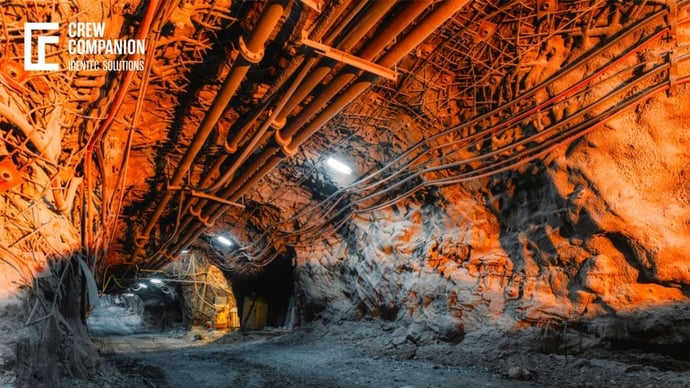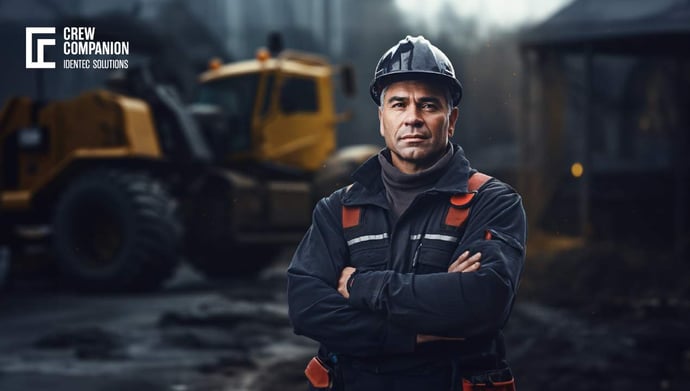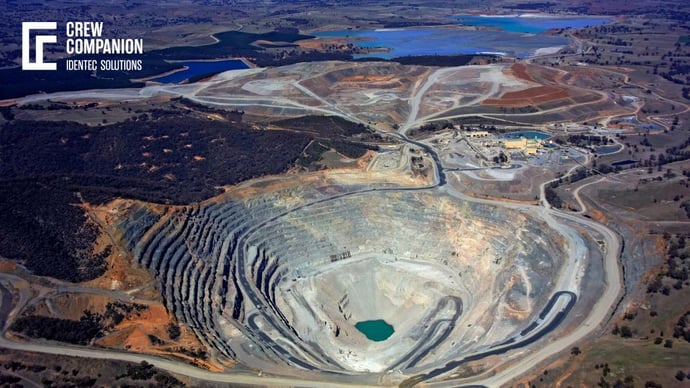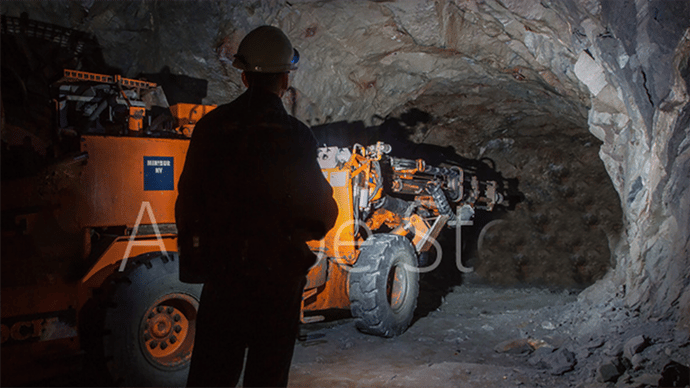Safe Zone Training in Mining: Enhancing Emergency Readiness Through Real-Time Tracking and Simulation
| Written by Mark Buzinkay

No video selected
Select a video type in the sidebar.
What is a safe zone in mining?
In both underground and open-pit mining, the concept of “safe zones” is a cornerstone of modern mining safety protocols. A safe zone refers to a designated area within or near the mining site where workers can seek protection from immediate or potential hazards. These zones are specifically engineered and strategically located to provide a refuge during emergencies such as rockfalls, ground collapses, gas leaks, fires, blasting operations, or machinery accidents. In underground mines, safe zones may be equipped with life support systems, air filtration, communication tools, and first-aid supplies. In open-pit operations, they are often marked assembly points or shelters at a safe distance from active blasting zones or slope instability areas.
In underground mining, where workers operate in confined, enclosed environments, the risks are significantly elevated. Rockbursts, tunnel collapses, and gas leaks can occur without warning. Safe zones in this context are often reinforced chambers, equipped with emergency supplies and communication systems, where workers can take refuge until rescue operations are launched. These zones are typically located at regular intervals along major access routes and are clearly marked to ensure all personnel are aware of their locations. They also serve as rallying points during evacuation procedures and play a critical role in emergency preparedness training.
In open-pit mining, the dangers differ in nature but not in severity. Heavy machinery, such as haul trucks, excavators, and drilling rigs, operates simultaneously, creating a high-risk environment for collisions or operational accidents. Additionally, controlled blasting operations can project debris over considerable distances. Here, safe zones are typically established at a calculated distance from active mining faces, blast sites, and haulage routes. Workers are required to relocate to these zones during blasting or during the operation of certain equipment to ensure their safety. These zones are often protected by natural barriers, berms, or constructed shelters and are clearly defined through signage and access control systems.
The importance of safe zones lies in their role as part of an integrated safety and emergency response framework. Mining environments are inherently unpredictable due to geological variability, mechanical operations, and human factors. Accidents, while increasingly rare due to improved standards, still pose a significant risk to personnel. Safe zones ensure that in the event of an incident, workers have a predetermined location where they can remain protected until the threat passes or rescue teams arrive. This is especially critical in underground mining, where evacuation routes may be limited or compromised during an emergency.
Moreover, safe zones contribute to the overall psychological assurance for workers, as they know there is a protected space in case of danger. This can enhance morale, reduce stress, and support safer work behaviours. From a regulatory perspective, the implementation of well-marked and accessible safe zones is often required by occupational safety authorities and mining legislation around the world. It is also a key factor in mine design and risk assessments during the planning stages of mining projects.
Technological advances have further improved the effectiveness of safe zones. Real-time monitoring systems, including tracking of personnel and environmental conditions, enable mining operators to verify occupancy and safety conditions within these areas. Integration with communication systems ensures that workers inside safe zones can maintain contact with surface control centres, enabling more coordinated emergency responses.
Safe zones and mining processes
Safe zones are integral to both emergency response planning and routine operational activities such as blasting in mining operations. Their role is not limited to passive protection; rather, they form a proactive and structured component of mine safety management systems. In both underground and open-pit mines, the concept of safe zones is woven into procedures that dictate how personnel behave before, during, and after high-risk activities and how they respond in the event of an unplanned incident.
During blasting operations—one of the most hazardous routine activities in mining—safe zones are critical to ensuring that all personnel are clear of danger before a blast is initiated. In open-pit mines, a blast exclusion zone is carefully delineated based on the blast radius, the type of explosives used, the local geology, and the size of the planned detonation. All workers must be accounted for and relocated to designated safe zones prior to the countdown. These zones are situated beyond the potential reach of fly rock, overpressure, and ground vibration. Supervisors conduct headcounts, often with the help of electronic miner tracking systems, to ensure no one remains within the danger zone. Communication between the blast controller, supervisors, and the personnel in the safe zones is maintained continuously. Once the area is declared clear and secured, the blast can proceed. After the detonation, no one is allowed to re-enter the exclusion zone until post-blast inspections confirm it is safe. These inspections check for misfires, ground stability, and gas emissions. Only then are personnel allowed to return to the work site from the safe zones.
In underground mining, safe zones assume a more structured role due to the confined and complex nature of the environment. These areas are pre-established refuges, often equipped with life-sustaining supplies such as oxygen, water, and communication equipment. In the case of an emergency—such as a rockfall, fire, toxic gas release, or equipment failure—personnel are trained to move to the nearest safe zone rather than attempting to exit the mine, which may be dangerous or impossible. Emergency response plans detail the pathways to safe zones, evacuation sequences, and communication protocols. These zones are strategically located based on escape route modelling and hazard mapping, ensuring that workers can reach them within a critical timeframe.
Beyond emergencies, safe zones also serve during planned maintenance or inspections in high-risk areas. For example, when heavy machinery is operating, nearby workers may be required to temporarily relocate to a safe zone until the task is complete. This minimises exposure to moving equipment and operational hazards.
In all cases, the effectiveness of safe zones is supported by rigorous training, simulation drills, and technology. Digital mine systems often monitor the real-time location of personnel and environmental conditions. In emergencies, this data helps guide responders and confirm whether individuals have reached safe zones.
Overall, safe zones are not isolated shelters but dynamic elements of a mine’s operational rhythm and emergency architecture. Their integration into standard operating procedures reflects a proactive approach to safety—anticipating risks, structuring workflows around them, and ensuring that people are always protected.
How To do Safe zone training?
The effective use of safe zones in mining depends heavily on rigorous training and continuous monitoring. These processes are not static; they are embedded in a dynamic safety culture where regular practice, simulation, and evaluation ensure that personnel can respond appropriately under pressure. Training for safe zone protocols typically begins during onboarding and is reinforced through periodic refresher courses, site-specific drills, and emergency simulations. Workers are trained not only to understand the location and purpose of safe zones but also to follow precise response procedures under various emergency scenarios, including fire, gas leaks, seismic events, and equipment failures.
Simulated drills are a core part of this training. These exercises replicate real-life emergencies to assess the effectiveness of safe zone planning and individual preparedness. In underground mining, for example, trainees may be required to navigate low-visibility tunnels, follow escape routes, and seek shelter in the nearest refuge chamber within a set time limit. The goal is to build muscle memory and confidence, ensuring that even under stress, workers can make the right decisions. In open-pit operations, drills often simulate blasting scenarios, including timed evacuations to safe zones and post-blast re-entry protocols.
Monitoring solutions, particularly digital safety systems, play a pivotal role in evaluating these training activities. Personnel tracking technologies using RFID, UWB, or Bluetooth tags allow supervisors to monitor each worker’s location during drills in real time (see also: RFID in mining). This data is collected and analysed to measure compliance with evacuation timelines, identify bottlenecks in escape routes, and pinpoint individuals who may require additional training. These insights are often visualised through digital dashboards, helping safety managers assess performance and adjust emergency protocols accordingly.
Environmental monitoring systems also contribute to training evaluation. For instance, gas sensors and airflow monitors are sometimes integrated into training environments to simulate hazardous conditions. These tools allow for more realistic scenario planning and the measurement of reaction times under simulated stress. Communication tools are tested as well, ensuring that alerts reach all personnel and that individuals can report their status or request assistance from within a safe zone.
Ultimately, the use of monitoring technologies transforms training from a theoretical exercise into a data-driven safety program. Mining companies can move beyond checkbox compliance and foster a safety culture rooted in accountability, readiness, and continuous improvement. Training becomes a living process—tracked, analysed, and refined to ensure that when a real emergency strikes, every worker knows where to go, how to get there, and how to stay safe.
FAQ: Safe Zones in Mining
What exactly is a safe zone in a mining operation?
A safe zone in mining is a designated area where personnel can take refuge during hazardous situations, such as blasting, equipment failure, or natural incidents like rockfalls or gas leaks. In underground mines, these areas are often equipped with emergency supplies, fresh air systems, and communication devices. In open-pit mines, safe zones may be marked areas outside the blast radius or locations with stable ground conditions. They serve as critical points of safety during both planned operations and emergencies.
How are workers trained to use safe zones effectively?
Workers receive regular training that includes both theoretical instruction and practical simulations. This involves learning the locations of safe zones, evacuation routes, and correct behaviour during various emergency scenarios. Drills are conducted to mimic real-life conditions, such as low visibility or time-constrained evacuations, helping workers develop instinctive responses. Monitoring systems track movements during these drills, allowing supervisors to assess performance and refine training programs as needed.
How do modern technologies enhance the use and monitoring of safe zones?
Digital monitoring solutions, such as real-time location systems (RTLS), track worker movements throughout the mine. During both training and actual operations, these systems confirm whether personnel have reached safe zones within the required timeframes. Sensors and communication tools installed in safe zones also allow for constant environmental monitoring and ensure workers can stay in contact with surface control teams. These technologies enable faster emergency responses and more accurate evaluations of training effectiveness and compliance.
Takeaway
Safe zones are essential to mining safety, but their effectiveness relies on rigorous training and real-time tracking. Through technologies like RFID, mines can monitor worker movements during drills and actual operations, ensuring personnel reach safe zones quickly and reliably. This tracking data enables safety managers to assess training outcomes, refine emergency protocols, and address areas for improvement. By integrating digital monitoring with structured safety drills, mining operations transform safe zone training into a responsive, data-driven process—ensuring that every miner is protected and accounted for when it matters most.
Delve deeper into one of our core topics: Miner safety
Glossary
Muscle memory refers to the process by which physical actions become automatic through repetition. It involves the brain encoding motor tasks into long-term memory, enabling the body to perform movements without conscious thought. This is especially useful in high-pressure or emergency situations, like in mining, where trained responses can save lives. Muscle memory is developed through consistent practice, allowing faster and more reliable reactions.
References:
(1) https://minearc.com/about-us/regulations/
(2) https://downloads.regulations.gov/MSHA-2013-0032-0005/content.pdf
(3) Schmidt, R. A., & Lee, T. D. (2011). Motor Control and Learning: A Behavioral Emphasis (5th ed.). Human Kinetics.

Author
Mark Buzinkay, Head of Marketing
Mark Buzinkay holds a PhD in Virtual Anthropology, a Master in Business Administration (Telecommunications Mgmt), a Master of Science in Information Management and a Master of Arts in History, Sociology and Philosophy. Mark spent most of his professional career developing and creating business ideas - from a marketing, organisational and process point of view. He is fascinated by the digital transformation of industries, especially manufacturing and logistics. Mark writes mainly about Industry 4.0, maritime logistics, process and change management, innovations onshore and offshore, and the digital transformation in general.




